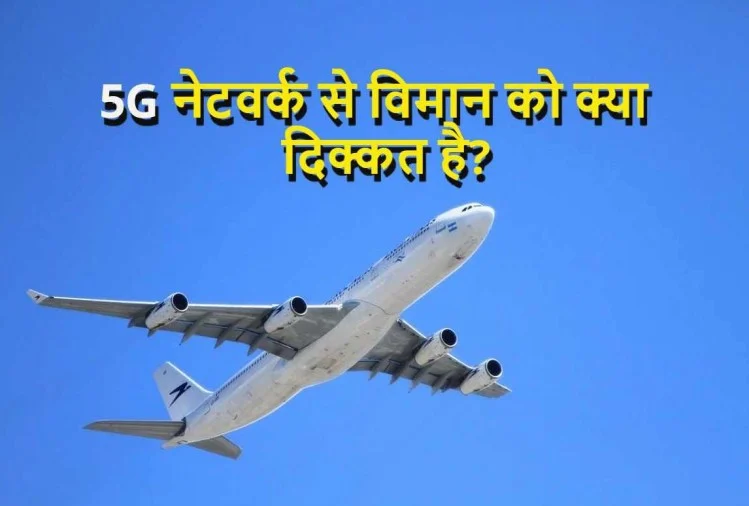Considering the next big thing in internet speed and connectivity, 5G is expanding rapidly over the age. Meanwhile, in a recent development, officials associated with American Airlines have warned that 5G services launched in the country by companies like AT&T and Verizon pose a threat to airline safety; the new C-band 5G service could affect thousands of flights and many aircraft, he reiterated.
In early 2021, mid-range 5G spectrum was auctioned off to US cell phone carriers. Spectrum in the 3.7-3.98 GHz range, known as the C band, was sold for around $80 billion. India has yet to hold a spectrum auction, and the government plans to auction 5G spectrum somewhere in March-April, after which developments on the official 5G launch will begin. The Federal Aviation Administration (FAA) has warned that 5G technology could affect equipment such as altimeters. With the help of an altimeter, it is possible to know how high the plane is flying above the ground. In fact, devices like altimeters work in the 4.2 to 44 GHz range, and 5G auctions are very close to that range. That is why new technologies are having an impact on devices like altimeters.

United Airlines CEO Scott Kirby told last month that the FAA’s 5G mandate would affect radio altimeters at the 40 largest US airports. The American Airlines warned that the directives would affect 4% of daily flights. The altimeter is also used to avoid hazards like auto landing and wind shear that could be affected by 5G technology. The higher the frequency in the spectrum, the better the speed, which is why carriers want to work at higher frequencies to give users the best possible 5G experience. Some of the C-band spectrum that have been auctioned is already used for satellite transmission and traffic, which will further increase with 5G. Telecommunication companies have agreed to provide buffer zones at 50 US airports to reduce risk.

Other countries have also noted that the range of spectrum provided to mobile companies for 5G technology will not be used for any other communication. The European Union set standards for mid-range 5G frequencies in the 3.4-3.8GHz range in 2019. South Korea has also laid down 5G mobile communication frequencies in the 3.42-3.7 GHz range. That said, if the correct frequencies are used, 5G networks will not affect airline communications.
In order to implement 5G connectivity in India, the 3.3-3.6 Ghz band will require 100 Mhz of 5G spectrum. Major telecommunication companies have received experimental spectrum for testing, which they can use to test their 5G equipment and services. The Indian Ministry of Defense currently offers spectrum in the 3300 to 3400MHz band. Meanwhile, the Indian Space Research Organization (ISRO) uses spectrum in the 3400 to 3425 Mhz band to meet its needs. Metros and major cities in India will be the first to benefit from 5G deployments next year, the Department of Telecommunications (DoT) communicated. The cities which will be first introduced to 5G connectivity in India include Gurugram, Bangalore, Kolkata, Mumbai, Delhi, Ahmedabad, Hyderabad, and Pune.


